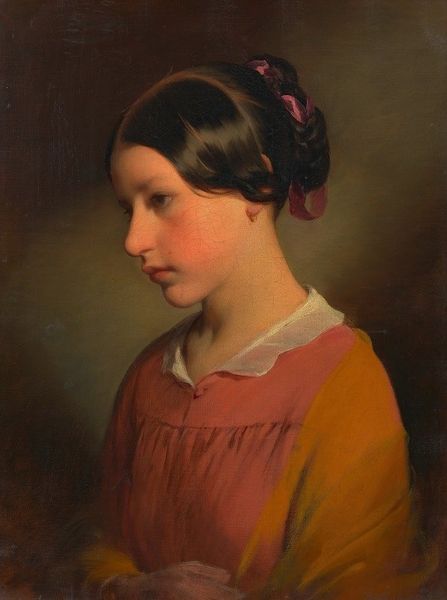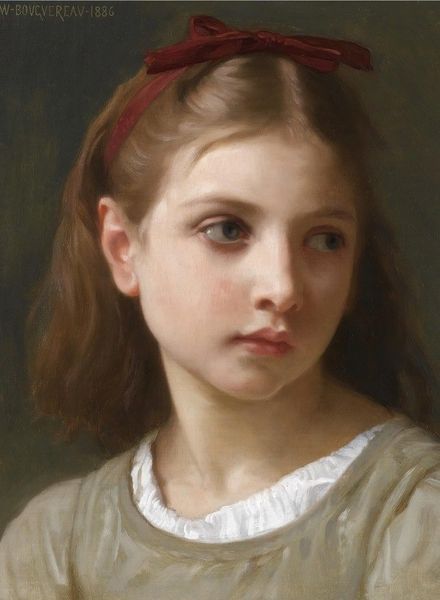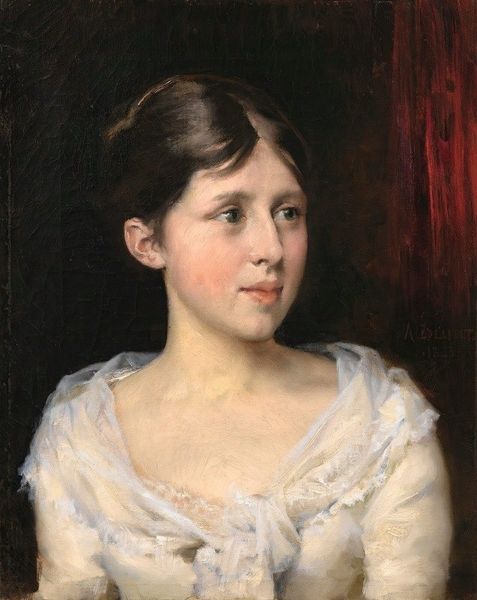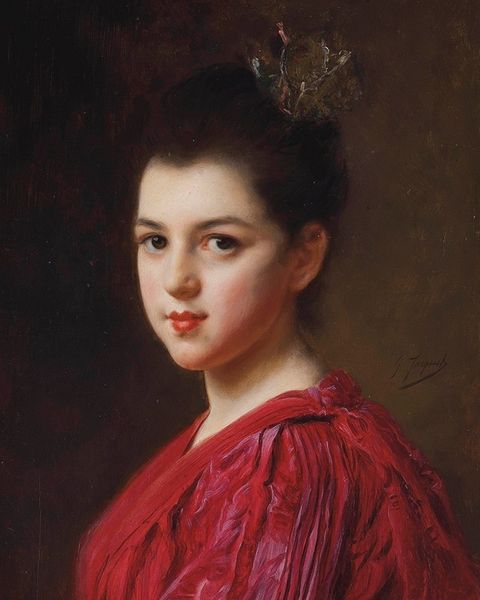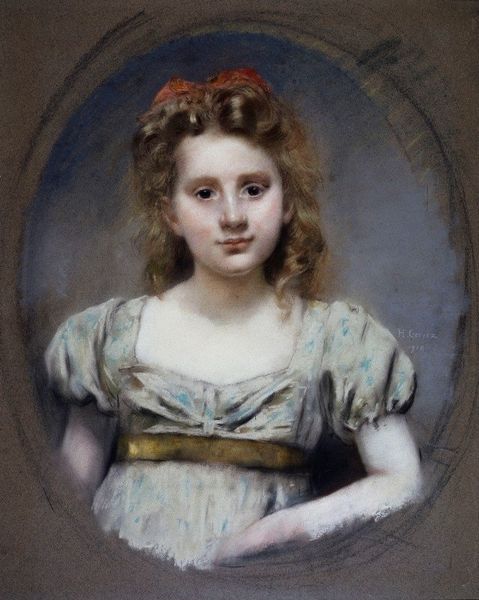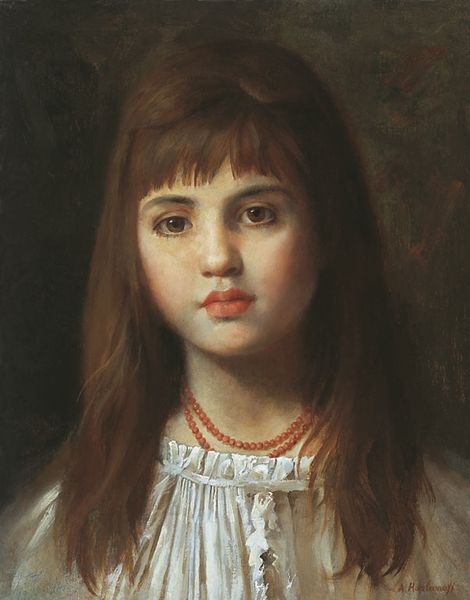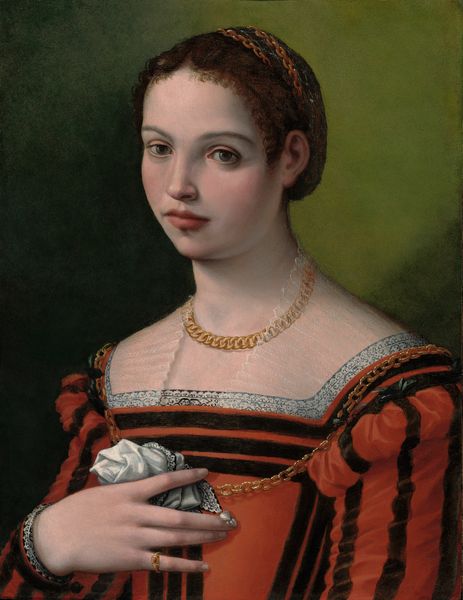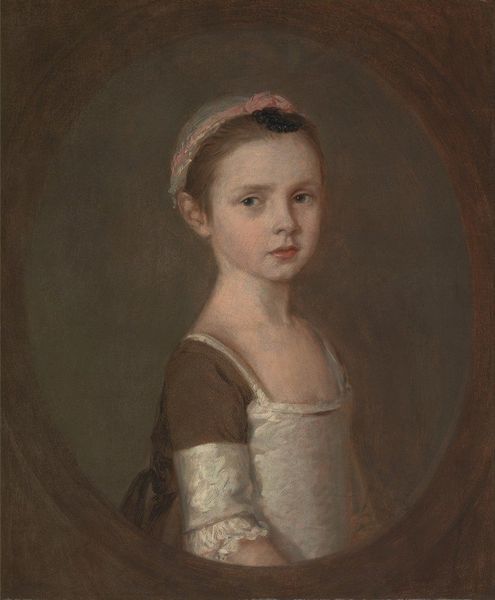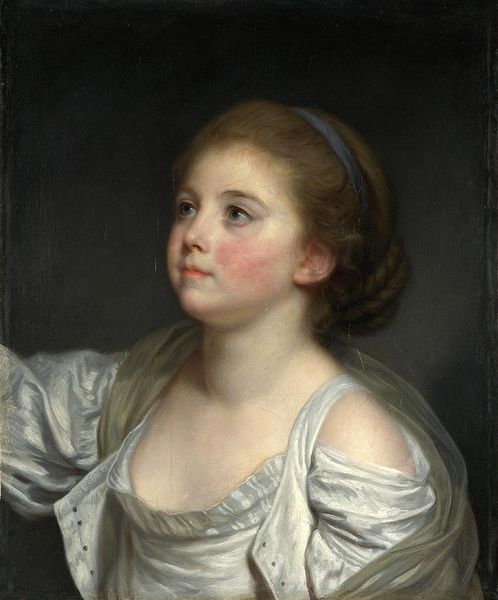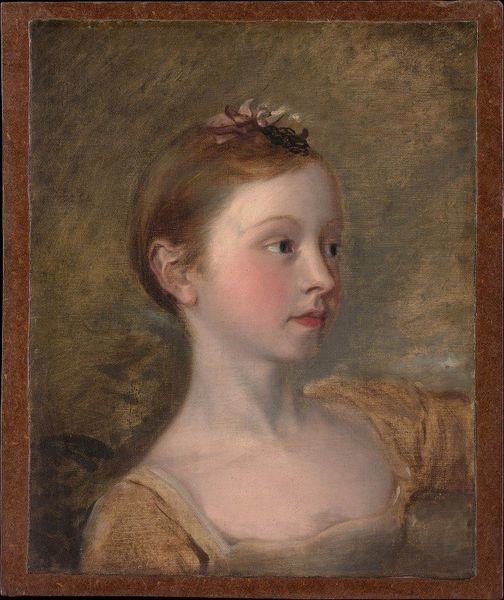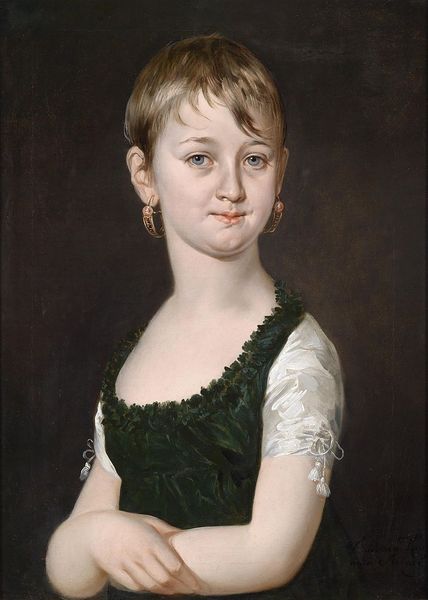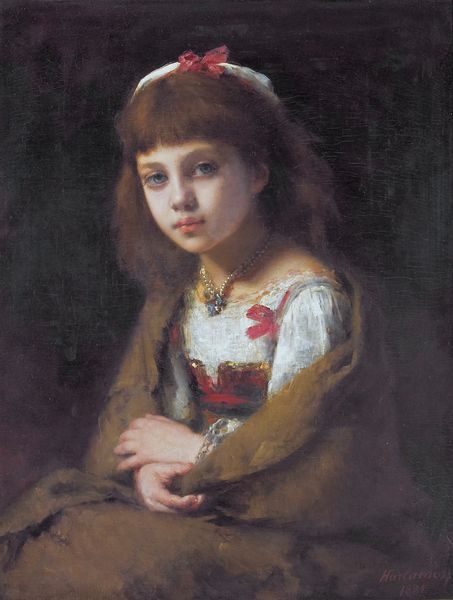
Copyright: Public Domain: Artvee
Editor: Fantin-Latour’s oil painting "Marie-Yolande de Fitz-James" from 1867 captures this girl’s quiet composure so well. The dark backdrop really makes her pale skin and ornate dress stand out. I wonder, what’s your take on this piece? Curator: What I find particularly fascinating about portraits like this from the 19th century is how they were instrumental in constructing and reinforcing social hierarchies. How does Fantin-Latour's representation of Marie-Yolande speak to the elite status of her family within French society? Editor: I see it in the details – her delicate features, the lace on her dress, even the way she holds herself. It suggests privilege, but there's also a sense of the constraints placed on women of that class. Curator: Exactly! Consider the role of institutions like the Salon in shaping artistic taste and validating certain representations. Fantin-Latour was working within a system that prized technical skill and idealized beauty, but can we also see hints of a more modern sensibility in the way he captures the sitter's individuality? Is it strictly social or are they subtle intimations of her personal psychology? Editor: That's a good point. While the painting certainly reflects the conventions of its time, there's something about her expression that feels less staged, more intimate. Curator: Indeed, and that tension, between social performance and individual expression, makes the portrait so compelling to me. The painting engages the discourse of female representation but does so in a somewhat nuanced manner. Editor: So it’s more than just a record of what she looked like. It is capturing her position in society and perhaps even hinting at who she was as a person. Thanks, I hadn't thought of it that way. Curator: My pleasure. Every brushstroke in these works contributes to a complex web of meanings.
Comments
No comments
Be the first to comment and join the conversation on the ultimate creative platform.

